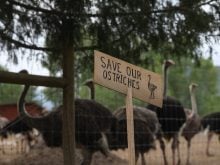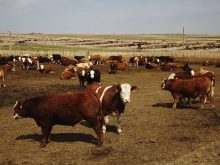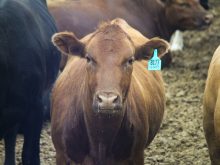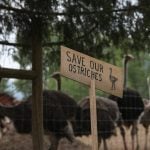RED DEER – People seeking the map to the fountain of youth recently
overflowed a Red Deer conference hall.
While most in the audience were horse enthusiasts, they share a common
interest with the rest of the population who want to know why their
joints are stiffening and their brows are permanently creased.
They also want to know how to slow these changes so they can move into
their fifth, sixth and seventh decades in comfort and good health.
Read Also

Lending policy still focused on primary producers: Farm Credit Canada
Farm Credit Canada said it has not changed its business practices and remains committed to supporting all producers, after a report from an Ottawa-based media outlet claimed otherwise.
Finding the key to longevity in mammals is one area of research for
gerontologist Richard Miller of Ann Arbor, Michigan. He and other
scientists are plotting the biology of aging in mammals and hope to
find the connection that could extend life.
“The key question is not why people age, but why don’t we age slower?”
he said at a Alberta horse breeders conference in early January.
Hormones and other factors studied in the lab appear to slow or speed
up the aging process in dogs, rats, worms, elephants and primates.
Miller defines aging as a process that progressively converts healthy
young adults into less healthy older adults with a progressively
increasing risk of illness, injury and death. It starts at the
microcellular level.
All aging alters the functions of cells and involves a number of
pathways in development.
Laboratory work has found common factors in aging.
- Caloric restriction slows aging in almost all species.
The average laboratory mouse lives for 900 days, the equivalent to 80
human years. Mice placed on a calorie-restricted program lived up to
1,200 days and appeared vigorous until the end. Their lifespan was
equal to about 120 years in a human being.
The program appeared to slow down conditions commonly associated with
aging like cancer, cataracts and muscle weakness.
- Genetic mutations in mice extend longevity and slow multiple aspects
of aging. They appear to have greater amounts of stress resistance than
their shorter-lived mates.
“If you change just one gene, the lifespan of these animals is
dramatically extended by twofold or threefold or fourfold,” Miller said.
However, reduced size was a side effect. Pituitary glands of the mice,
known as Snell Dwarf mice, did not produce much growth hormone and the
thyroids did not produce prolactin needed for milk production.
The skin, collagen and tendons remained pliable well into middle age,
but they were also slower to mature sexually.
- Various studies have shown a strong correlation between body size and
aging. For example, small dogs and miniature horses appear to live much
longer than full-sized breeds. Smaller creatures seem to have less of a
chemical known as growth factor one.
Miller said the growth hormone appears to be connected to aging and
more research is needed to learn if these findings are common among
many species.
“Just tinkering with the growth hormone alone is enough to give you a
good deal of lifespan,” Miller said. “It is a sign we really need to
look at factors that control growth, because they are probably the ones
that influence aging.”
This situation has also been noted in humans suffering from a rare form
of dwarfism. The people did not have growth hormones or prolactin and
appeared to be long lived. However, injecting elderly humans with
growth hormones did not have the desired effect in research trials.
While they reported more muscle strength, their joints were weaker and
they became more prone to liver cancer.
- Environment can also play a role. Porcupines and elephants are
relatively long-lived because they have almost no natural enemies.
- Scientists learned that some activities in the body are beneficial
for the young, but dangerous as a body ages. Calcium is needed in young
animals for bone development, but later in life, when bones are fully
formed, calcium causes hardening of the arteries. Genes that stimulate
rapid growth in babies could cause cancer later.















